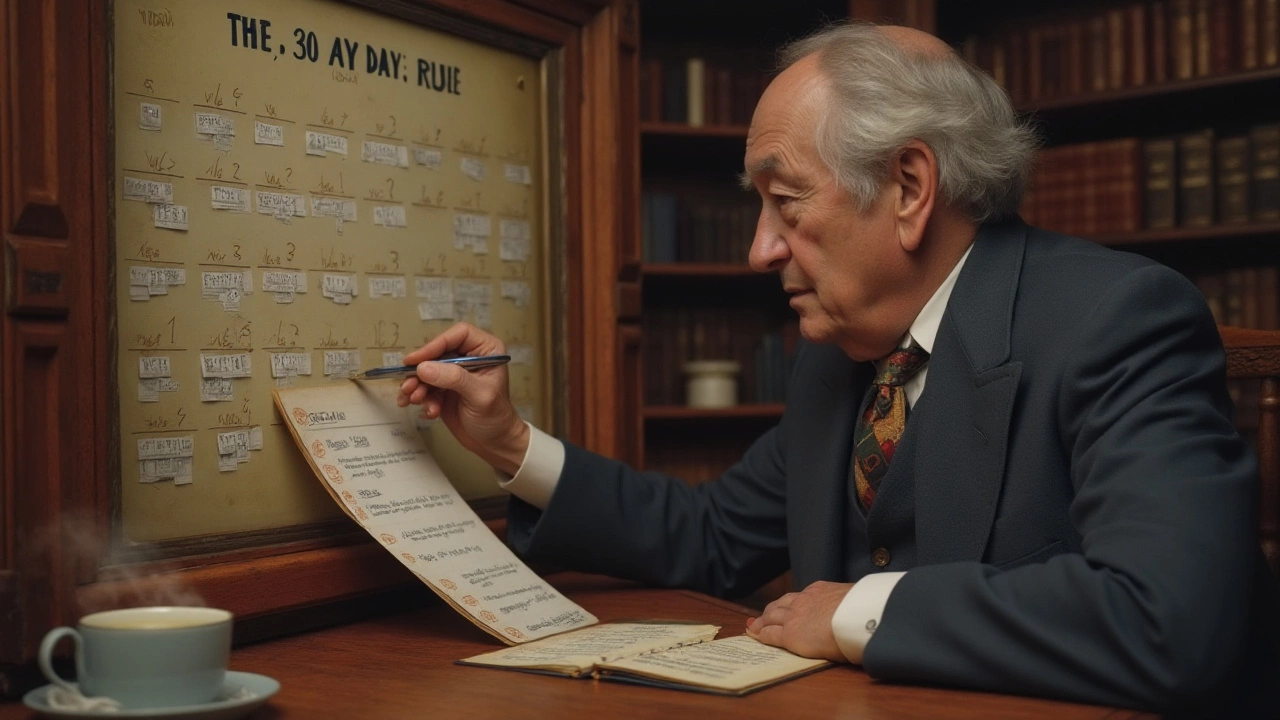Tag: budgeting tips

Setting up a budget feels overwhelming at first, but it really boils down to nailing down a few key things at the start. This article gives you a clear roadmap for tackling your first five budget items, from housing costs to emergency savings. Get practical tips and real-life examples so you can build a budget that actually works for you. You'll learn how to prioritize the basics and avoid common slip-ups. Ready to get your financial house in order, one step at a time?
Read More
Everyone loves the idea of having more money left at the end of the month, but it never seems to work out that way. This article explains the #1 rule of budgeting and why it matters more than every budgeting app or spreadsheet out there. You’ll get straight, practical tips to fit the rule into your daily life without making budgeting feel like a chore. Find out how to flip your mindset and make your money finally start working for you. Whether you’re just starting out or tired of budget fails, this guide can help you actually stick to a plan.
Read More
The 50 30 20 rule at Citizens Bank is a straightforward method for organizing your budget. This article explains how breaking down your income into needs, wants, and savings can help you get a handle on your spending. You'll learn real-life ways to apply this rule, avoid common mistakes, and use Citizens Bank tools to track your progress. Simple tips and quick facts will make even the most budget-phobic reader feel in control. Perfect for anyone tired of complicated money advice.
Read More
Is stashing away $500 a month actually smart or just the bare minimum? This article breaks down what $500 a month can do for your finances, how it stacks up against real-life expenses, and realistic ways to make it work. You'll get straight-up facts about emergency funds, savings goals, and making your money stretch further. Grab down-to-earth advice for anyone trying to boost their bank account one month at a time. No sugar-coating, just practical tips for building better habits.
Read More
The golden budget rule, better known as the 50/30/20 rule, slices your income into clear spending categories without making your head spin. This article breaks down how the split works in real life, why it’s so popular, and who benefits most from it. You’ll get plain, real-world examples and quick tips for sticking to the plan—even when bills pile up. We’ll even bust some common myths about budgeting. You’ll come away ready to use the rule to keep your money on track, no matter your income.
Read More
Ever wondered why people rave about the 'no spending rule'? This article breaks down exactly what it is, how it works, and why it can seriously shift your money habits. You'll find tons of practical advice and eye-opening facts about financial self-control. If you want to give your wallet a breather and actually keep more of your cash, this one's for you. Dive in for some real-world tips you can start using today.
Read More
Tackling a $30,000 debt within a year might seem daunting, but with clear strategies and focused planning, it’s achievable. Explore practical methods like budgeting, side hustles, and leveraging debt consolidation loans. Learn ways to boost your income and make informed financial decisions. Achieve financial freedom by adopting actionable steps and disciplined spending habits.
Read More
Discover the 30-day rule, a powerful technique to enhance your money management skills. Learn how this simple practice can help curb impulse spending and boost your savings. Delve into practical applications and hear about real-life success stories that highlight the effectiveness of this strategy. With the 30-day rule, you can transform your financial habits and achieve your financial goals more effectively. Explore this budgeting tool and start making informed spending decisions today.
Read More
Discover the impact of the 60/40 budget rule on personal finance management. This budgeting method helps streamline expenses and savings by allocating 60% of the income to needs and 40% to wants and dreams. Practical tips and real-world insights make this approach accessible to individuals seeking financial security.
Read More
Starting a budget when you're broke may seem daunting, but it's a crucial step towards financial stability. This guide provides practical steps to help you kickstart your budgeting journey with minimal resources. Discover easy-to-follow techniques for tracking expenses, cutting costs, and gradually building a savings buffer. Whether you're dealing with debt or simply aiming to make your money stretch further, there's something in these tips for everyone. Designed to empower you with financial control, this advice can transform your relationship with money.
Read More
The 30-40-30 rule offers a straightforward approach to managing personal finances by breaking down expenses into three main categories. This rule suggests allocating 30% of your income to needs, 40% to savings and debt repayment, and another 30% to wants and discretionary spending. It's an adaptable guideline that can make budgeting less intimidating and more structured, helping individuals maintain a balanced financial lifestyle. Discover how this method can be tailored to fit diverse financial situations and provide clarity in financial planning.
Read More
The 50 20 30 budget rule is a popular method for organizing your finances and balancing spending. This approach allocates 50% of your income to needs, 20% to savings, and 30% to wants. It's a simple way to ensure you're meeting your financial goals while also enjoying your earnings. The method offers flexibility and clarity, making it suitable for both budgeting novices and experienced money managers.
Read More